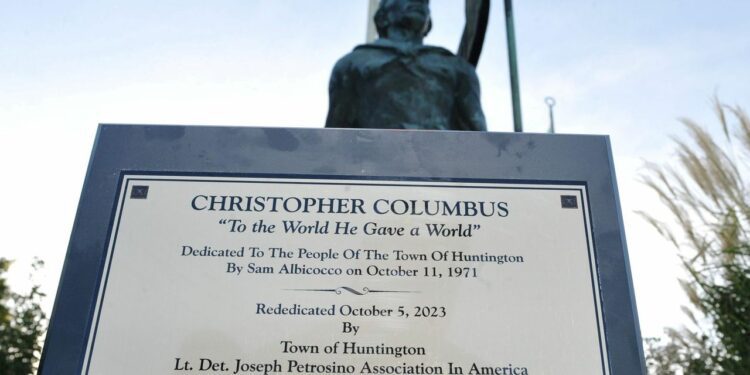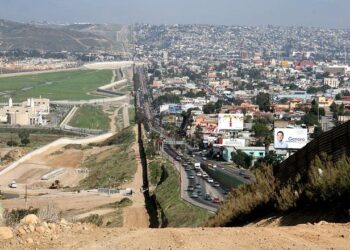A parade float travels up Fifth Avenue at the 78th annual Columbus Day Parade in 2022 in New York. Credit: Louis Lanzano
Are there guidelines on teaching the history of the holidays?
Through much of the 20th century, American textbooks tended to refer to the “discovery” of America by Europeans, said Alan Singer, Hofstra University professor of teaching, learning and technology. The 1980s brought new recognition “that there already were people here,” he said.
New York State Education Department guidelines call for young elementary school students to discuss when and why national holidays such as Columbus Day are celebrated.
According to the guidelines, older elementary school, middle school and high school students learn in greater detail about the voyages Columbus and other European explorers made, the spheres of influence their nations developed in the Western Hemisphere and about the trans-Atlantic trade of goods, movement of people, and spread of ideas and diseases known as the Columbian Exchange.
High school students will investigate the population of the Americas before the arrival of the Europeans, evaluating the impact on indigenous populations, the guidelines say.
How do teachers blend the two perspectives?
Generally, said Gloria Sesso, president for the Long Island Council for the Social Studies, teachers “aren’t talking about an evaluation of Columbus — we’re talking about how perspectives have changed,” emphasizing different views and different sources that show how and why those views change over time.
Several schools officials said the holidays did not lend themselves to a definitive characterization of Columbus as hero or villain.
In Uniondale, a district whose calendar observes both Columbus Day and Indigenous Peoples Day, U.S. History teacher Jillian Pallone said the lesson plan for her 11th-grade students included a history of the holidays, using sources like video interviews with advocates for each holiday to evaluate different perspectives.
“We talk about what points did each side raise, what surprised you, how do the arguments relate to the broader impact of colonization on Native Americans,” she said.
At Roosevelt schools, where the calendar observes Indigenous Peoples Day, Superintendent Shawn Wightman said in an email that the district’s adoption of the day followed state and national leaders who “emphasized the importance of honoring the resilience and contributions of Indigenous peoples while also recognizing the need to reflect on the more complex legacy of colonization.”
Roosevelt educators engage “students in discussions that explore the complexities of Columbus’ voyages, including both the achievements and the consequences of his expeditions, particularly the impact on Indigenous communities. We emphasize the importance of acknowledging these historical truths while encouraging students to reflect on the broader implications of how history is told and who gets to tell it.”
Fatima Morrell, Southampton schools superintendent, said educators there, partly because of the district’s Shinnecock population, have for years tried to emphasize the experience of Indigenous peoples in their teaching.
“There were civilizations and economies and systems of knowledge of ways of knowing” in the Western Hemisphere before the Europeans arrived, and teachers encourage students to use a variety of primary and secondary sources to investigate them, she said.
The district’s calendar decision was controversial, she said, but “when we elevate indigenous history and culture, it doesn’t mean we’re diminishing Italian American history and culture.”
Source link : http://www.bing.com/news/apiclick.aspx?ref=FexRss&aid=&tid=670b98c3e1ca4c95a55773c5a0c19ea3&url=https%3A%2F%2Fwww.newsday.com%2Flong-island%2Feducation%2Fcolumbus-indigenous-peoples-long-island-schools-native-american-w676fah9&c=2132038701041165550&mkt=en-us
Author :
Publish date : 2024-10-12 21:00:00
Copyright for syndicated content belongs to the linked Source.










